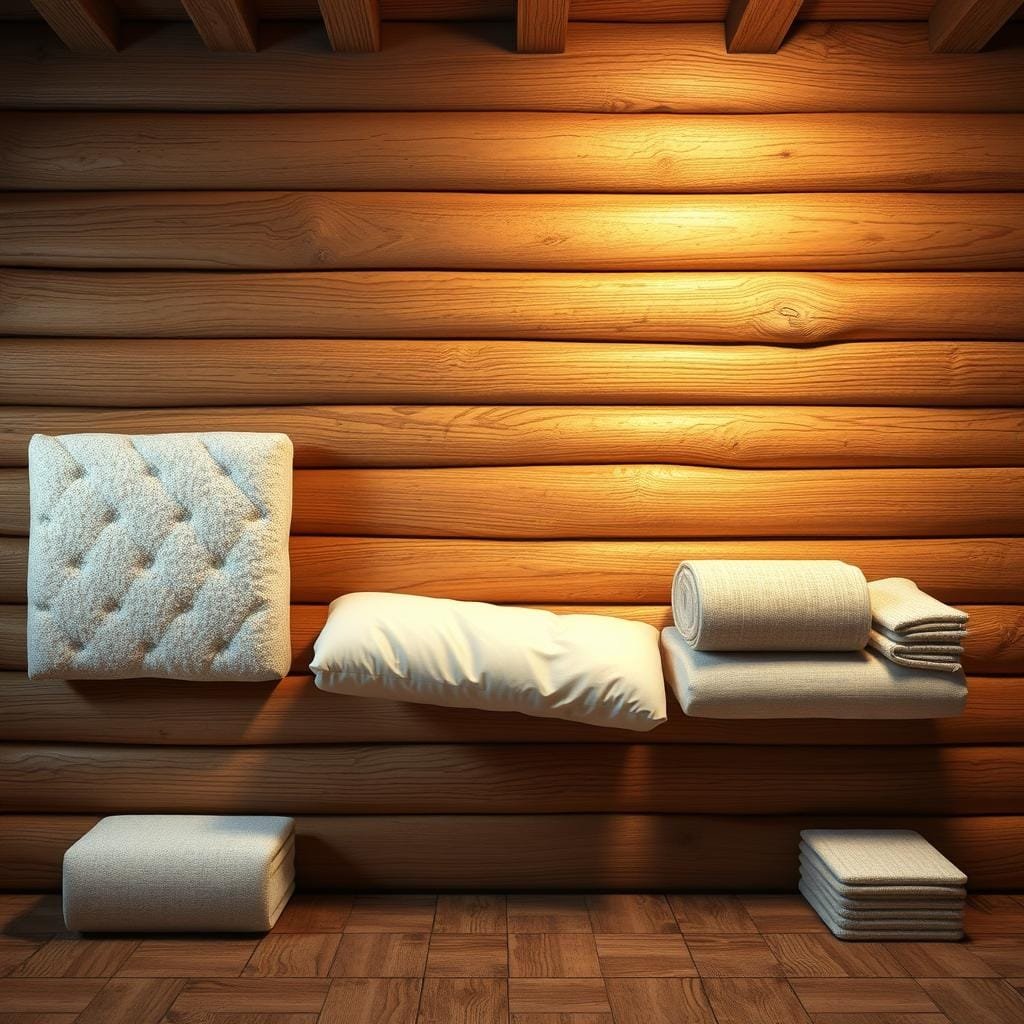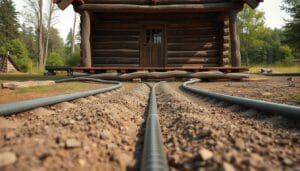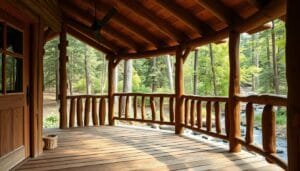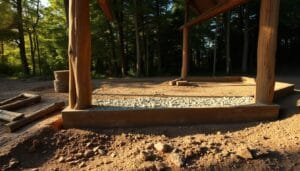Does your peaceful retreat feel a bit too much like the great outdoors, even when you’re inside? Many cabin owners face this challenge. The natural charm of a log structure often comes with a hidden cost: poor thermal performance.
A typical log cabin wall has an R-value of only about 8. This is much lower than the recommended minimum of R-13 for exterior walls. Even after sealing and treating, the logs themselves simply don’t provide adequate insulation.
This comprehensive guide will show you how to fix that. Properly addressing your cabin‘s walls can transform a drafty, uncomfortable space into a true sanctuary. You’ll enjoy cozy warmth in winter and refreshing coolness during summer.
We’ll explore how the right approach boosts energy efficiency and year-round comfort. For a deeper look at techniques for insulating log cabins, we have you covered. Let’s turn your getaway into the perfect escape.
Understanding Cabin Insulation Needs
If your energy bills are higher than expected, your cabin’s walls might be the culprit. A proper assessment is the first step toward a cozier, more efficient retreat. Let’s break down what you need to know.
Assessing Thermal Comfort and Energy Costs
Wood is a natural insulation, but most types have a low R-value. A typical log cabin wall scores about R-8. This falls short of the modern standard of R-13 for exterior walls.
Logs absorb heat during the day and release it at night. This thermal mass helps, but it’s often not enough. In climates with big temperature swings, this natural system struggles.
The result? Your heating and cooling systems work overtime. This leads to higher energy costs. Improving your cabin‘s thermal envelope directly boosts comfort and efficiency.
Identifying Weak Spots in Existing Cabin Walls
Heat escapes through specific weak points. Knowing where to look is half the battle. Common problem areas include gaps between logs and joints where the walls meet the roof.
Check around windows and doors carefully. Also, look behind any interior cladding. These are key areas where heat loss occurs.
The type of log and its thickness matter. Solid 44mm logs offer better baseline performance. But even thick log structures usually need extra help for year-round temperature control.
Your local climate dictates the right strategy. Use this table to see how different conditions affect your plan to insulate log cabin space.
| Climate Type | Primary Challenge | Key Consideration |
|---|---|---|
| Extreme Cold | Maximize heat retention | High R-value materials are critical |
| High Heat & Sun | Reflect solar radiation | Radiant barriers can be very effective |
| Significant Humidity | Prevent moisture buildup | Vapor barriers and ventilation are essential |
Evaluating the Best Materials for Cabin Wall Insulation
Choosing the right insulation type can significantly impact your structure’s energy efficiency and long-term comfort levels throughout seasonal changes. Several excellent options exist, each with distinct advantages.
Exploring Spray Foam, Fiberglass, and Rigid Foam Options
Spray foam insulation expands to fill gaps, creating an effective air seal. Closed-cell foam provides superior R-value and acts as a moisture barrier. Open-cell is more budget-friendly and offers good soundproofing.
Fiberglass remains a popular choice for its affordability. It comes in batts or rolls that fit standard stud spaces. This traditional option provides reliable thermal performance.
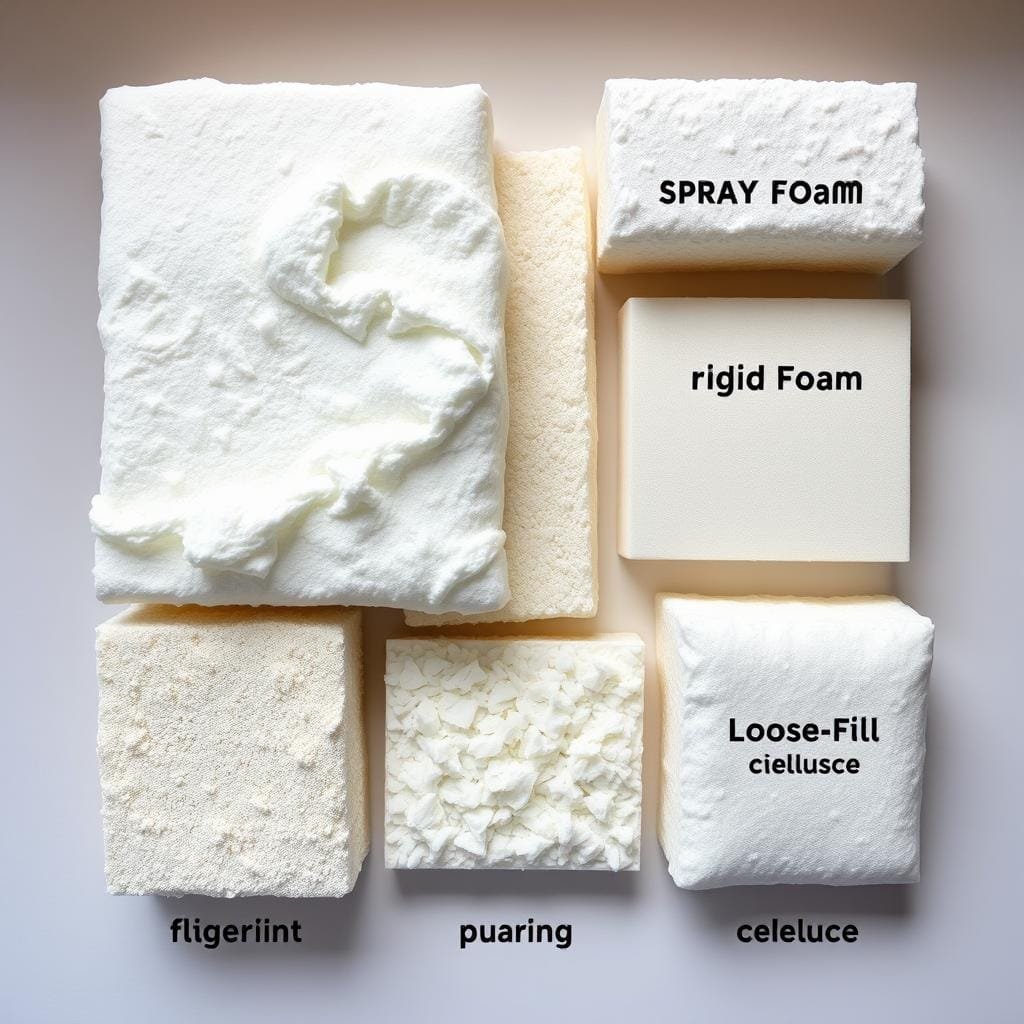
Rigid insulation boards deliver high R-value in compact form. They’re moisture-resistant and ideal for structures exposed to elements. PIR boards offer exceptional thermal efficiency.
Innovative Materials and Moisture Barrier Solutions
Modern solutions address specific challenges. Mineral wool works well in uneven spaces and provides excellent soundproofing. Radiant barrier insulation reflects heat, keeping interiors cooler.
For comprehensive guidance on log cabin insulation, consider professional advice. The right combination depends on your climate and usage patterns.
| Material Type | R-Value per Inch | Moisture Resistance | Best Use Case |
|---|---|---|---|
| Closed-Cell Spray Foam | R-6.0 to R-7.0 | Excellent | Extreme climates, moisture concerns |
| Open-Cell Spray Foam | R-3.5 to R-3.8 | Good | Budget projects, soundproofing needs |
| Fiberglass Batts | R-3.1 to R-4.3 | Fair | Standard framing, cost-effective solutions |
| Rigid Foam Boards | R-4.0 to R-6.5 | Excellent | Limited space, high efficiency required |
| Mineral Wool | R-3.0 to R-3.3 | Good | Uneven spaces, fire resistance needed |
Effective Insulation Techniques and Installation Tips
Getting the installation right is just as important as choosing the right insulation material. Proper techniques ensure your investment pays off with better thermal performance.
Sealing Gaps and Preventing Moisture Intrusion
Air leaks around walls and ceilings can undermine your entire project. Start by identifying all potential gaps where drafts enter.
Injector foam works well to seal gaps between logs and interior surfaces. For a rustic look, open-cell foam expands to create a tight barrier.
Building a timber frame with vertical battens creates the perfect structure for holding insulation. Space them 400-600mm apart for optimal support.
Always leave a small ventilation gap behind foil insulation. This prevents moisture buildup and condensation issues.
DIY Versus Professional Installation Approaches
Some projects are perfect for weekend warriors, while others need expert hands. Consider your skills and the complexity before starting.
| Approach | Best For | Skill Level | Tools Required |
|---|---|---|---|
| DIY Installation | Fiberglass batts, rigid boards | Beginner to Intermediate | Basic hand tools, utility knife |
| Professional Help | Spray foam, complex structures | Expert Required | Specialized equipment |
Fiberglass batts and rigid boards are manageable for most homeowners. Spray foam applications typically require professional equipment.
Before altering your log cabin structure, check the warranty. Many manufacturers void coverage if you modify the original walls.
Finishing with tongue and groove panels completes the look. This protects your insulation investment while enhancing the space.
Boosting Energy Efficiency and Cabin Comfort
Maximizing your retreat’s coziness involves a holistic strategy. You must address every potential source of heat exchange. This creates a complete thermal envelope for optimal temperature control.
A well-insulated space requires far less energy for heating and cooling. This leads to significant long-term savings on your bills.
Optimizing Heat Retention and Cooling Strategies
Start from the top. For a pitched roof, place insulation between the rafters. A flat ceiling benefits from insulation laid directly on top of the boards.
Don’t forget the floor. Fit rockwool or rigid boards between the joists. Large area rugs add an extra layer of comfort and stop warmth from escaping.
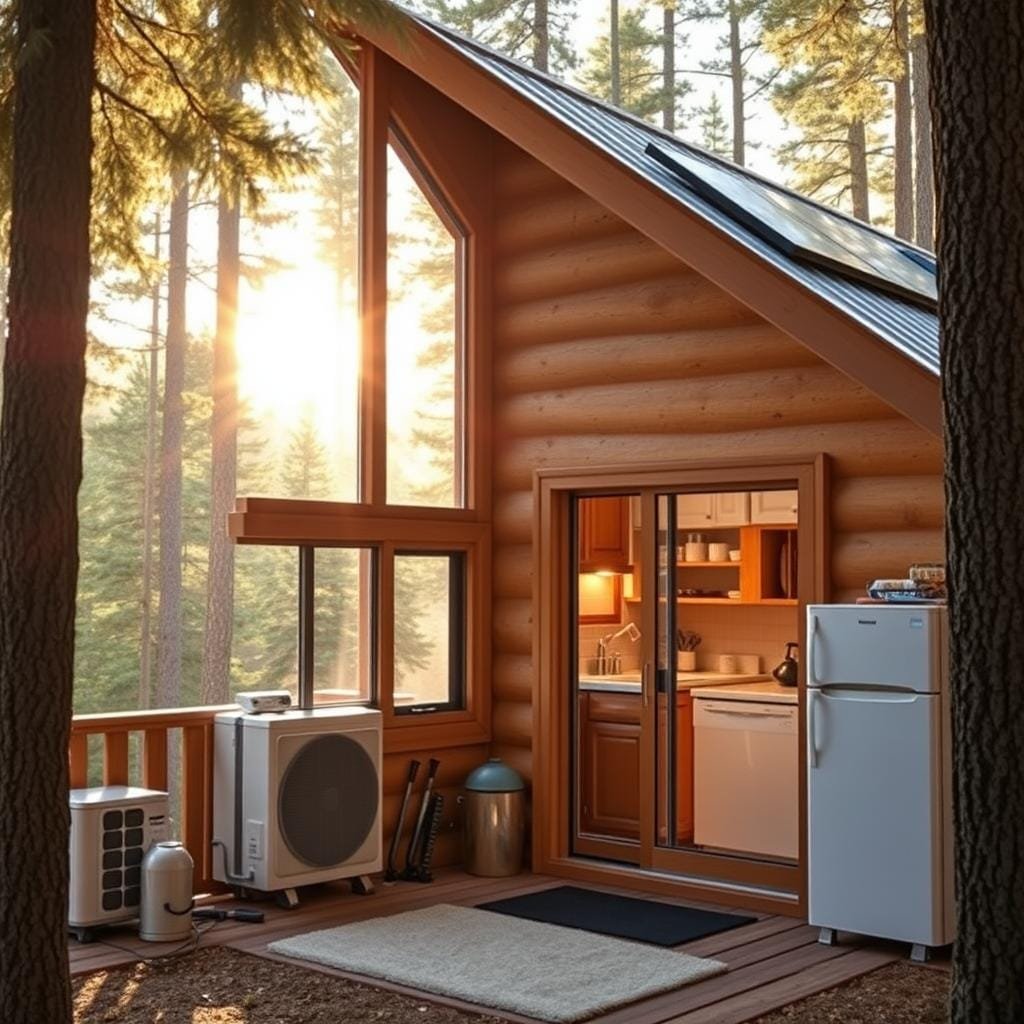
In summer, proper insulation keeps cool air inside. Ceiling fans are a fantastic way to enhance cooling. They cost nearly one hundred times less than air conditioning.
Triple-paned windows and heavy curtains provide extra heat retention. They also keep your space cooler when the sun is intense.
Enhancing Structural Strength and Long-Term Savings
Some insulation types offer more than just thermal resistance. Closed-cell spray foam, for example, adds rigidity to the building’s frame.
This dual benefit improves your retreat’s integrity. It also boosts energy efficiency for decades. It’s a smart choice for long-term value.
Complement your efforts with other savvy choices. The US Department of Energy states propane heat is more cost-effective than electric. Smart thermostats automate temperature control to save energy.
LED bulbs, timers, and smart power strips eliminate wasted electricity. These small changes make a big difference in overall efficiency.
| Energy-Saving Upgrade | Primary Benefit | Estimated Impact on Efficiency |
|---|---|---|
| Comprehensive Roof & Floor Insulation | Seals the thermal envelope | High – Reduces major heat loss/gain |
| High-Performance Windows | Minimizes conductive heat transfer | Medium-High – Addresses key weak points |
| Ceiling Fan Installation | Improves air circulation for cooling | Medium – Reduces AC dependency |
| Smart Thermostat & LED Lighting | Automates energy use | Medium – Optimizes daily consumption |
Investing in these strategies transforms your getaway. You gain superior comfort and control over your environment. The initial cost pays off quickly through lower utility bills.
Final Insights for a Cozy, Energy-Saving Cabin Retreat
Transforming your rustic getaway into a year-round sanctuary requires careful planning. The right insulation choice makes all the difference for comfort and protection.
Consider your climate, budget, and DIY skills when selecting an option. Fiberglass rolls work well for basic sheds, while spray foam offers superior performance for main living spaces.
Remember to check your structure’s warranty before making changes. Many manufacturers void coverage if you alter the original design. For more specific guidance, our beginner’s guide to insulating garden rooms provides excellent additional insights.
Whether you choose traditional methods or modern solutions like SIP panels, your investment will pay off through energy savings and enhanced usability. Your cozy retreat awaits!
